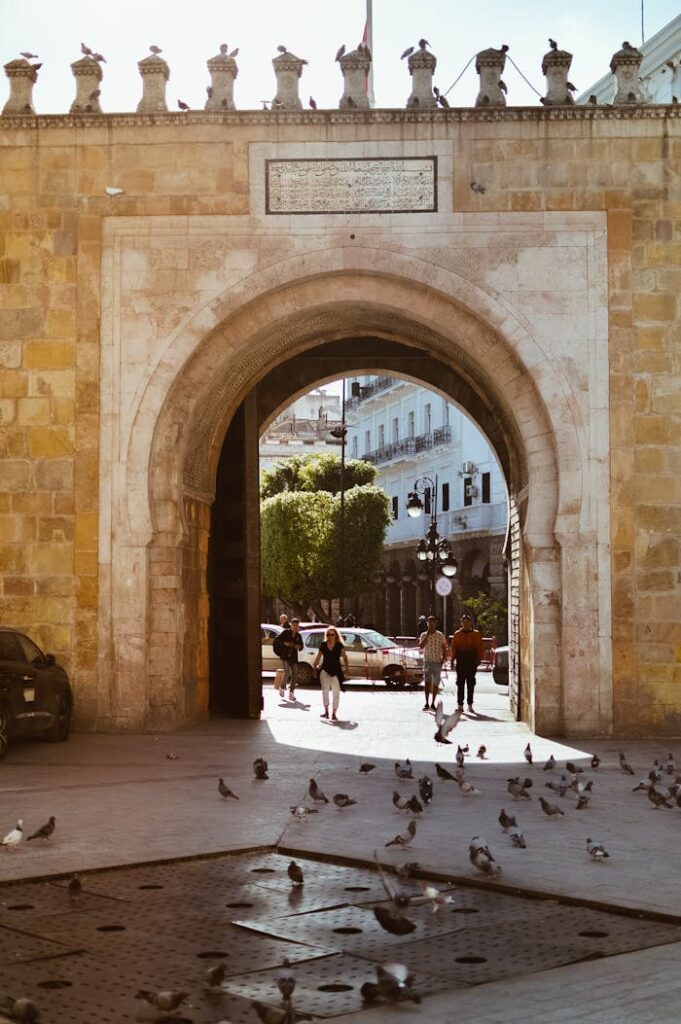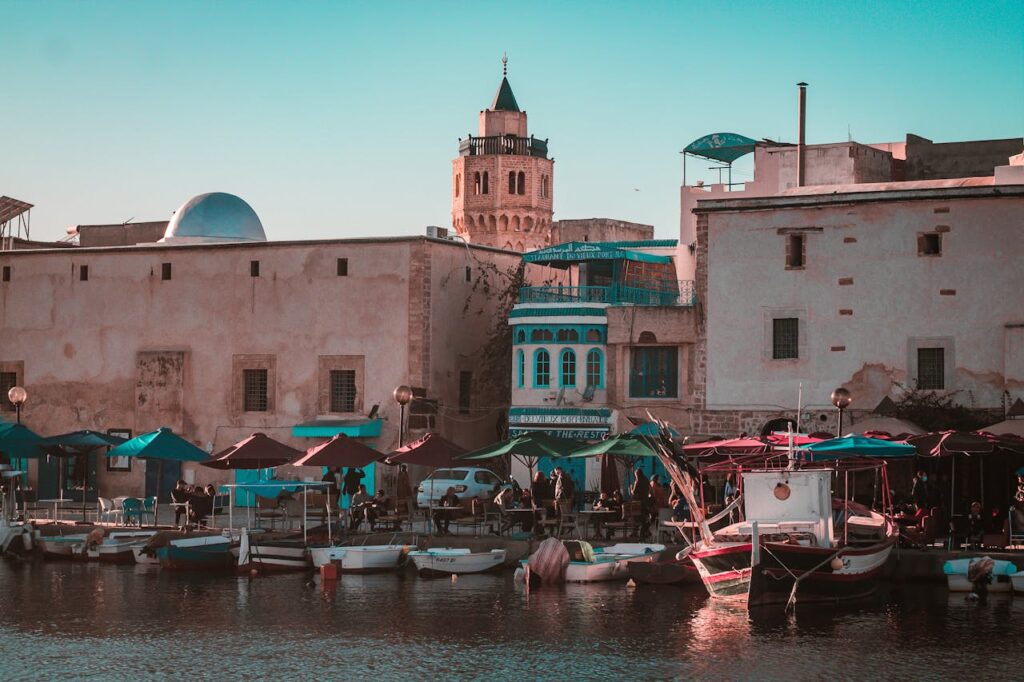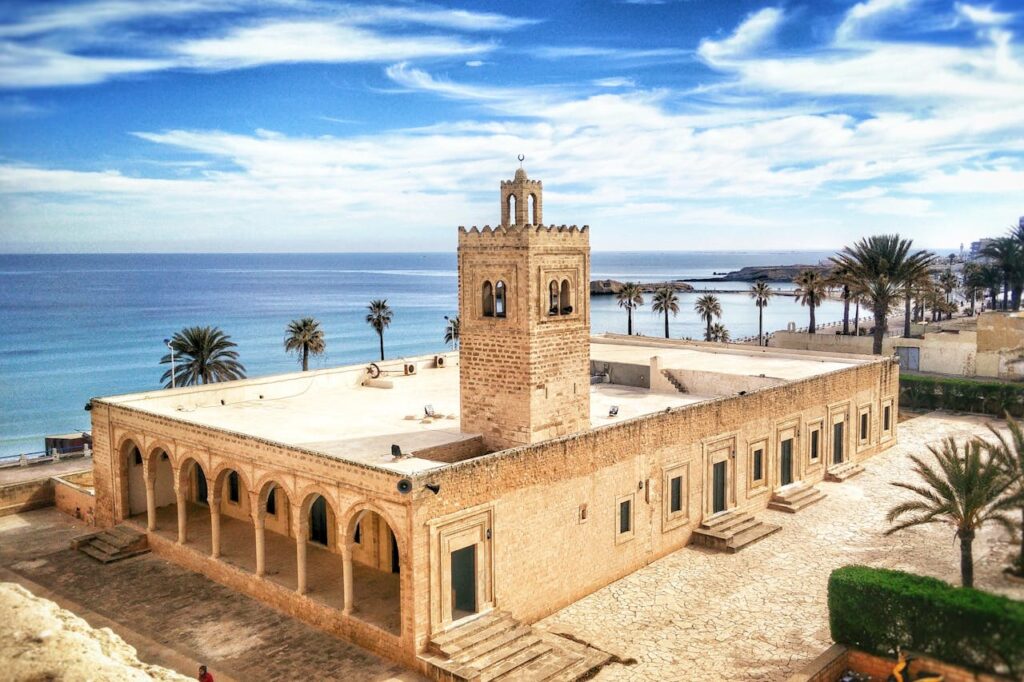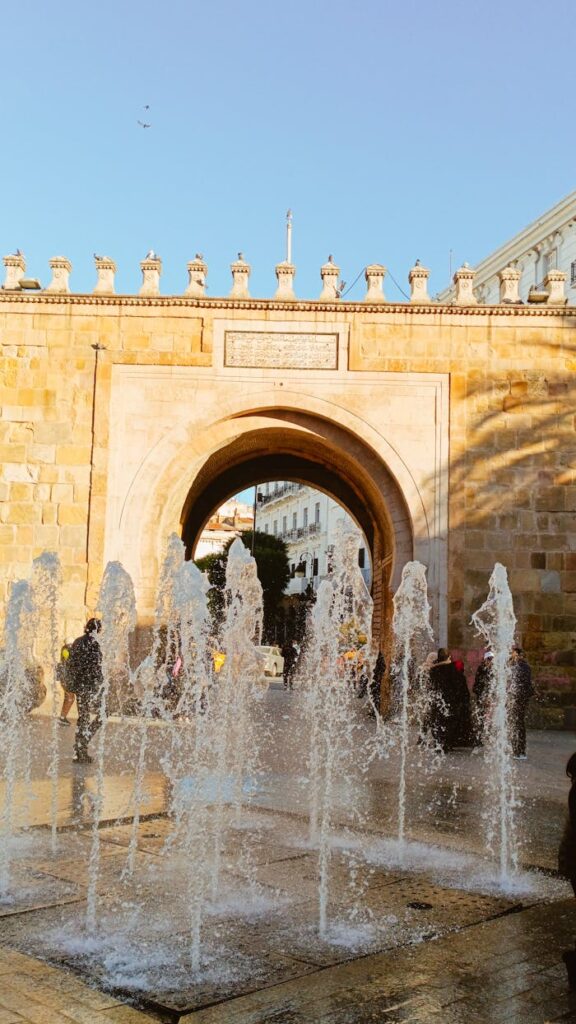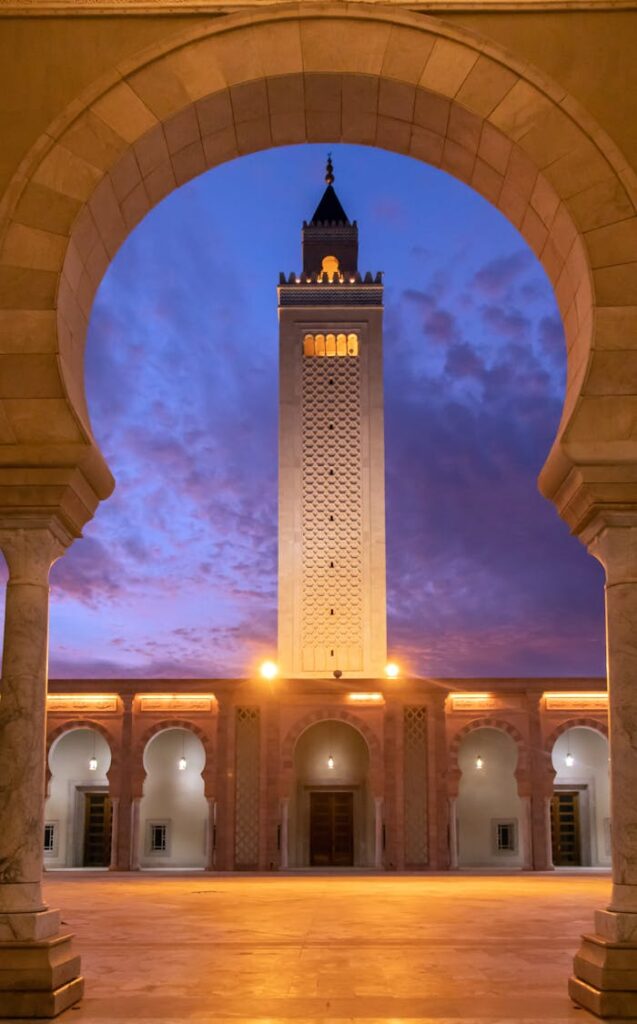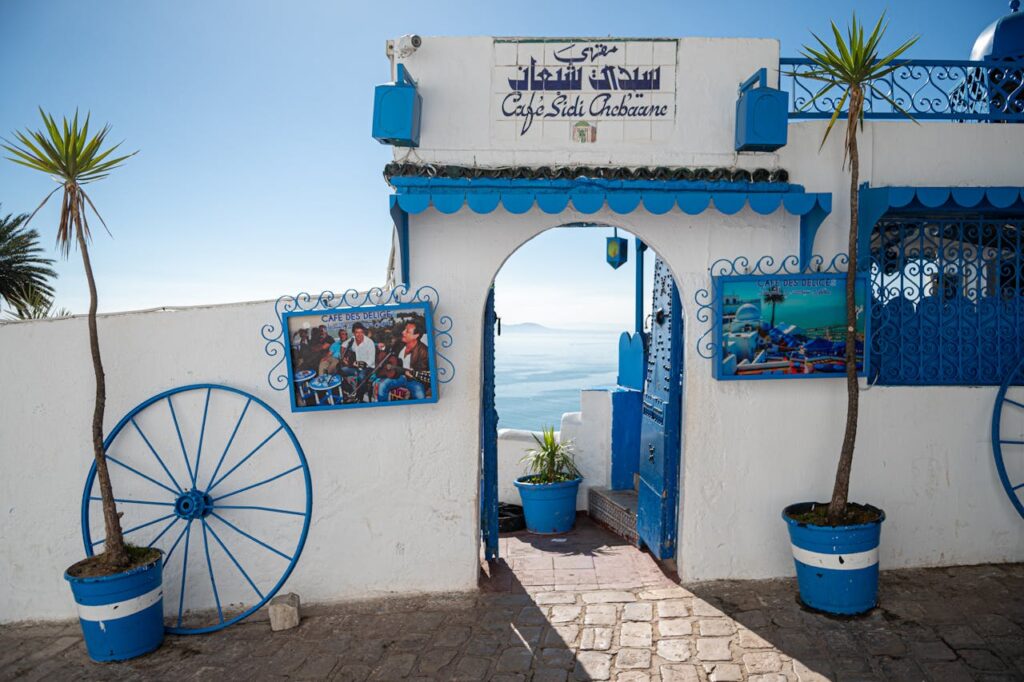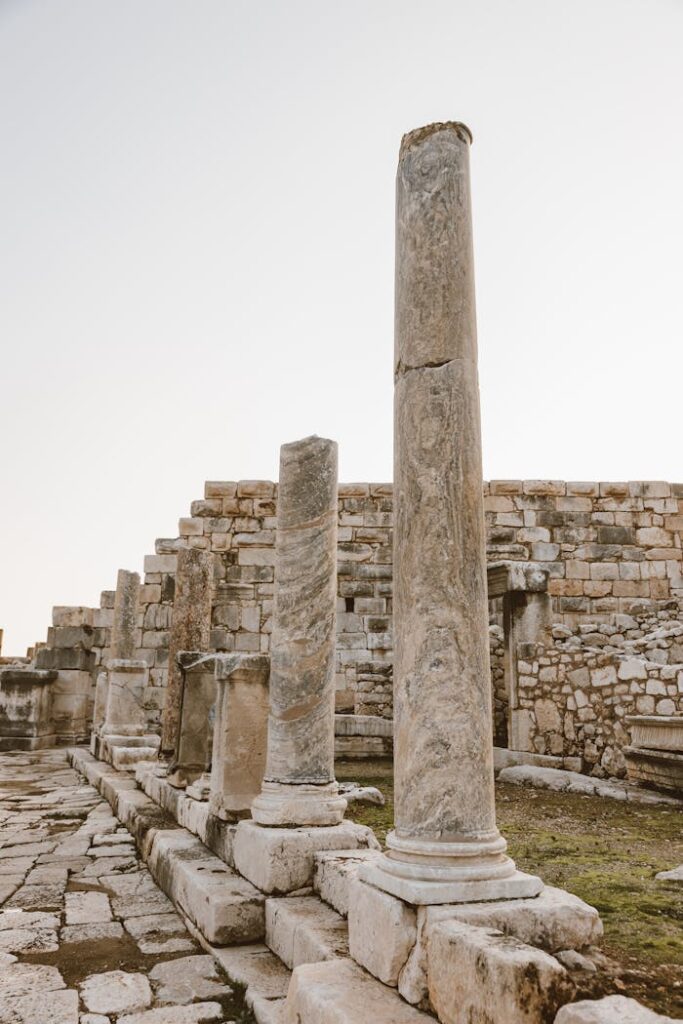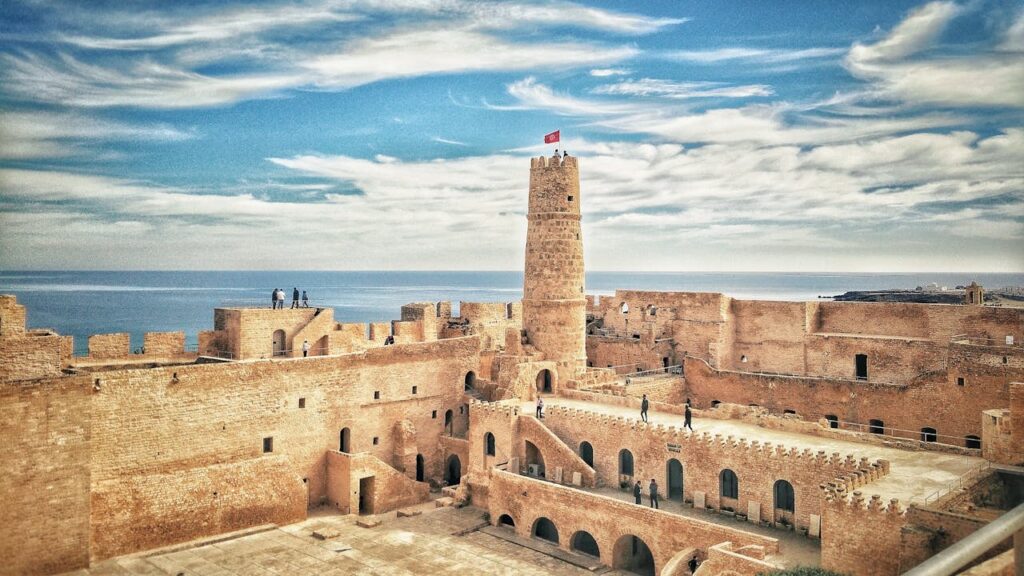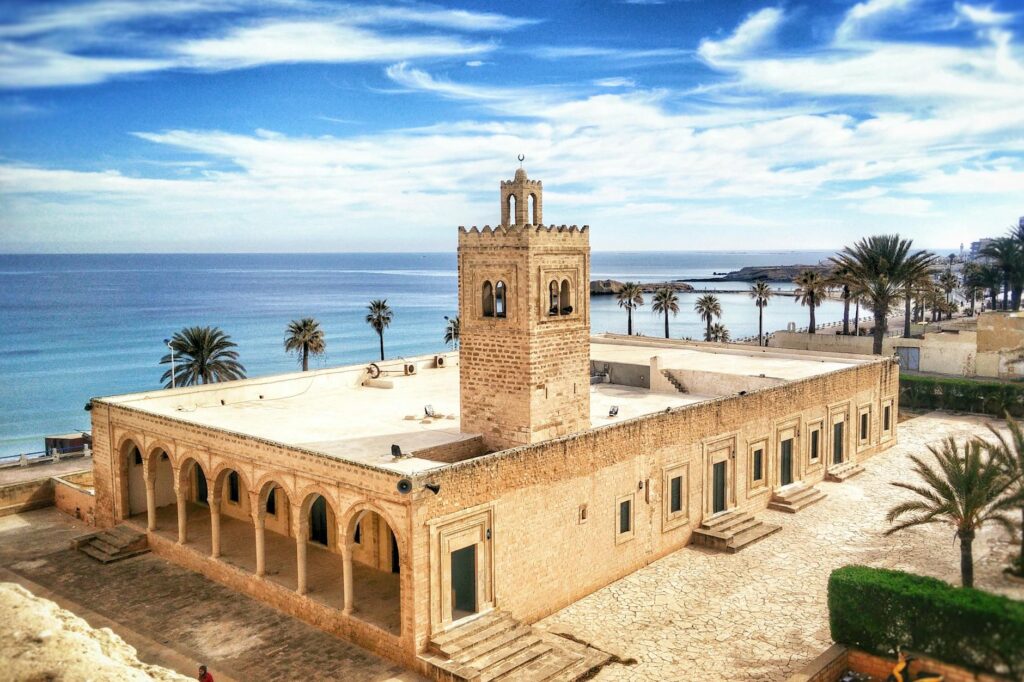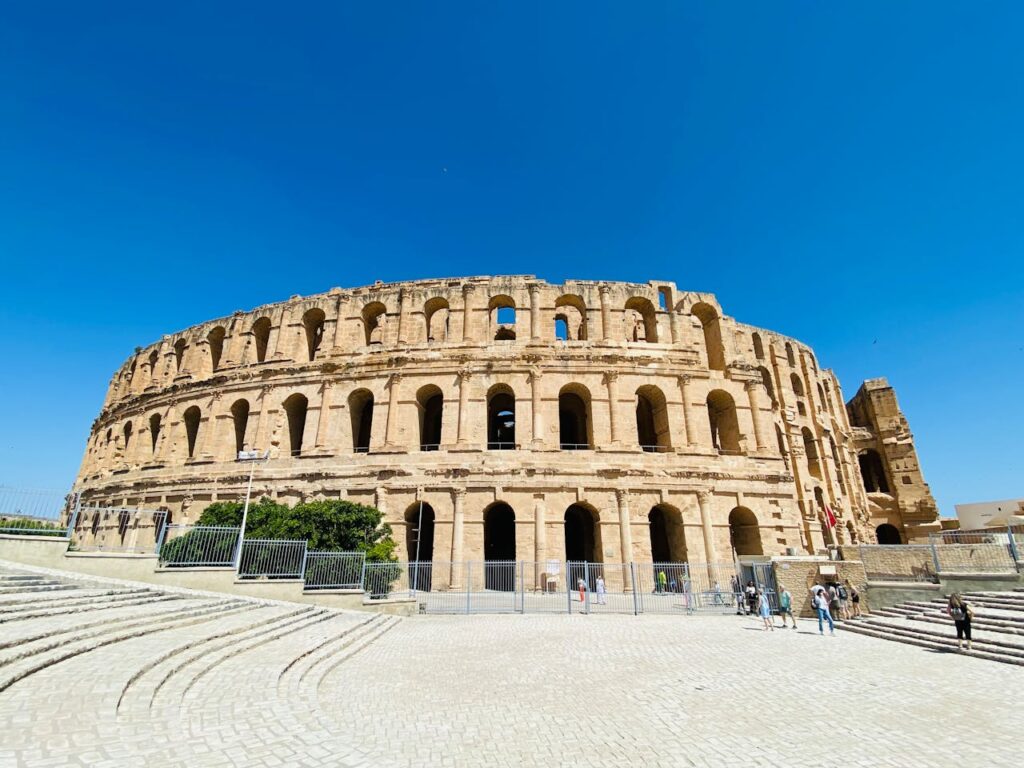Best Places to Visit in Djerba, Tunisia
Djerba, the largest island in North Africa, is a popular tourist destination known for its stunning beaches, rich history, and vibrant cultural scene. Located in the Gulf of Gabes, off the coast of Tunisia, Djerba offers a unique blend of Mediterranean charm and North African traditions. The island is famous for its whitewashed buildings, traditional markets, and warm hospitality. Visitors can explore ancient ruins, enjoy water sports, and experience the island’s unique culture. Here are some of the best places to visit in Djerba:
Best Places to Visit
1. Houmt Souk
Houmt Souk is the main town and commercial center of Djerba. It is known for its bustling markets, traditional architecture, and vibrant atmosphere. The town’s souks are filled with shops selling a variety of goods, including handicrafts, jewelry, spices, and textiles. Key attractions in Houmt Souk include the Borj El Kebir (also known as the Fort Ghazi Mustapha), the Fadhloun Mosque, and the Museum of Popular Arts and Traditions. Visitors can explore the narrow streets, enjoy local cuisine at the cafes, and soak in the lively ambiance.
- Key Attractions: Borj El Kebir, Fadhloun Mosque.
- Activities: Shopping, sightseeing.
- Location: Central Djerba.
2. Djerba Explore Park
Djerba Explore Park is a popular attraction that offers a combination of culture, history, and wildlife. The park features several sections, including the Lalla Hadria Museum, which houses a collection of Islamic art and artifacts, and the Djerba Heritage section, which showcases traditional Djerbian life. The highlight of the park is the Crocodile Farm, home to over 400 crocodiles. Visitors can learn about the reptiles, watch feeding sessions, and even hold baby crocodiles.
- Key Attractions: Crocodile Farm, Lalla Hadria Museum.
- Activities: Wildlife observation, cultural exploration.
- Location: Midoun, Djerba.
3. Guellala
Guellala is a picturesque village located on the southern coast of Djerba, known for its pottery and traditional crafts. The village has been a center for pottery-making for centuries, and visitors can see artisans at work in the local workshops. Guellala is also home to the Guellala Museum, which offers insights into the island’s history, traditions, and daily life. The museum features exhibits on traditional clothing, tools, and household items. Visitors can also enjoy stunning views of the surrounding landscape from the museum’s terrace.
- Key Attractions: Pottery workshops, Guellala Museum.
- Activities: Shopping, cultural learning.
- Location: Southern Djerba.
4. El Ghriba Synagogue
El Ghriba Synagogue is one of the oldest and most important synagogues in Africa. Located in the village of Erriadh, the synagogue is a significant pilgrimage site for Jews, especially during the annual Lag BaOmer festival. The synagogue’s interior is beautifully decorated with blue tiles, intricate woodwork, and Hebrew inscriptions. Visitors can learn about the history and significance of the site, and explore the surrounding Jewish quarter. The synagogue is a symbol of the island’s rich cultural and religious diversity.
- Key Attractions: Historic synagogue, Jewish quarter.
- Activities: Religious exploration, cultural learning.
- Location: Erriadh, Djerba.
5. Plage Sidi Mahres
Plage Sidi Mahres is one of the most popular beaches on Djerba Island, known for its fine white sand and clear turquoise waters. The beach is lined with resorts, hotels, and restaurants, offering a range of amenities for visitors. Plage Sidi Mahres is ideal for sunbathing, swimming, and water sports such as windsurfing and jet skiing. The beach is also a great spot to enjoy the sunset and relax in the tranquil surroundings.
- Key Attractions: Sandy beach, water activities.
- Activities: Swimming, sunbathing, water sports.
- Location: Northern Djerba.
6. Djerbahood
Djerbahood is an open-air street art gallery located in the village of Erriadh. The project began in 2014 when artists from around the world were invited to create murals on the walls of the village. The result is a vibrant collection of artworks that reflect the diverse cultures and perspectives of the artists. Visitors can stroll through the streets, admire the colorful murals, and learn about the stories behind the art. Djerbahood is a unique cultural experience and a must-visit for art lovers.
- Key Attractions: Street art, murals.
- Activities: Art appreciation, photography.
- Location: Erriadh, Djerba.
7. Ras R’mal (Flamingo Island)
Ras R’mal, also known as Flamingo Island, is a beautiful sandbar located off the coast of Djerba. The island is a popular destination for boat excursions and is known for its stunning beaches and clear waters. The area is home to a variety of bird species, including flamingos, which can often be seen wading in the shallow waters. Visitors can enjoy swimming, snorkeling, and relaxing on the pristine beaches. Boat trips to Ras R’mal often include a traditional Tunisian lunch on the island.
- Key Attractions: Pristine beaches, birdwatching.
- Activities: Boat trips, snorkeling, swimming.
- Location: Off the coast of Djerba.
8. Borj El Kastil
Borj El Kastil is a historic fortress located on the eastern coast of Djerba. The fortress dates back to the 15th century and was built to protect the island from invaders. The site offers a glimpse into Djerba’s military history and provides stunning views of the surrounding sea and landscape. Visitors can explore the remains of the fortress, including its walls and towers, and learn about the strategic importance of the site. Borj El Kastil is a great spot for history enthusiasts and photographers.
- Key Attractions: Historic fortress, scenic views.
- Activities: Historical exploration, photography.
- Location: Eastern Djerba.
9. Houmt Souk Market
The Houmt Souk Market is a bustling marketplace located in the heart of Houmt Souk. The market is a vibrant hub of activity, with vendors selling a wide range of products, including fresh produce, spices, textiles, and handicrafts. Visitors can explore the colorful stalls, sample local delicacies, and shop for souvenirs. The market is a great place to experience the local culture and interact with the friendly locals.
- Key Attractions: Local products, vibrant atmosphere.
- Activities: Shopping, cultural experience.
- Location: Central Houmt Souk.
10. Midoun
Midoun is the second-largest town on Djerba Island and is known for its lively markets, traditional architecture, and cultural events. The town is a popular destination for shopping, with numerous shops and stalls selling local crafts, jewelry, and clothing. Midoun is also home to several cultural sites, including the Mosque of Fadhloun and the Roman Catholic Church of St. Joseph. Visitors can explore the town’s charming streets, enjoy local cuisine, and experience the vibrant local culture.
- Key Attractions: Traditional markets, cultural sites.
- Activities: Shopping, sightseeing.
- Location: Central Djerba.
Summary Table
| Place | Description | Key Attraction | Distance from City Center |
|---|---|---|---|
| Houmt Souk | Main town with markets and traditional architecture | Borj El Kebir, Fadhloun Mosque | Central Djerba |
| Djerba Explore Park | Cultural park with crocodile farm and museum | Crocodile Farm, Lalla Hadria Museum | Midoun, Djerba |
| Guellala | Village known for pottery and crafts | Pottery workshops, Guellala Museum | Southern Djerba |
| El Ghriba Synagogue | Historic synagogue and significant pilgrimage site | Historic synagogue, Jewish quarter | Erriadh, Djerba |
| Plage Sidi Mahres | Popular beach with fine sand and clear waters | Sandy beach, water sports | Northern Djerba |
| Djerbahood | Open-air street art gallery in Erriadh | Street art, murals | Erriadh, Djerba |
| Ras R’mal (Flamingo Island) | Beautiful sandbar known for birdwatching and beaches | Pristine beaches, birdwatching | Off the coast of Djerba |
| Borj El Kastil | Historic fortress with scenic views | Historic fortress, scenic views | Eastern Djerba |
| Houmt Souk Market | Bustling marketplace with local products | Local products, vibrant atmosphere | Central Houmt Souk |
| Midoun | Lively town with markets and cultural sites | Traditional markets, cultural sites | Central Djerba |
How to Reach Djerba
By Flight
Djerba–Zarzis International Airport serves the island, offering regular flights from major cities in Europe and other parts of Africa. The airport is located about 8 km from Houmt Souk, the island’s main town. Taxis, shuttle services, and car rentals are available for transportation to and from the airport.
By Road
Djerba
is connected to the mainland by a causeway called the Roman Road. Visitors can reach the island by car or bus from other parts of Tunisia. The island is well-connected by road, making it easy to travel between towns and attractions.
By Ferry
Ferries operate between the mainland town of Jorf and the port of Ajim on Djerba Island. The ferry ride takes about 10 minutes and is a convenient way to reach the island. The ferries run frequently throughout the day, providing easy access for travelers.
Best Time to Visit Djerba
The best time to visit Djerba is during the spring (April to June) and autumn (September to November) months, when the weather is warm and pleasant. The island experiences a Mediterranean climate, with hot, dry summers and mild, wet winters. The summer months (July to August) are ideal for enjoying the beaches and water activities. The mild winter months (December to March) are also a good time to visit, especially for exploring the cultural and historical sites.
Travel Tips
- Local Cuisine: Djerba offers a variety of dining options, with a range of traditional Tunisian dishes and international cuisine. Be sure to try local specialties like brik, couscous, and seafood dishes. The island’s restaurants and cafes also offer delicious pastries and desserts.
- Cultural Insights: Djerba has a rich cultural heritage, with influences from Arab, Berber, Jewish, and Mediterranean traditions. Respect local customs and traditions, and be mindful of the island’s diverse communities. The island hosts various cultural events and festivals, providing an opportunity to experience its vibrant arts and music scene.
- Safety Tips: While Djerba is generally safe for tourists, it’s important to take common precautions. Avoid walking alone at night, especially in less populated areas. Keep your belongings secure and be cautious when using public transportation. Stick to well-known and busy areas, particularly around the main towns and tourist attractions.
Itinerary Suggestions
One-Day Trip
- Morning: Start your day with a visit to Houmt Souk, exploring the Borj El Kebir and the bustling markets. Have breakfast at a local café.
- Afternoon: Head to the Djerba Explore Park to visit the Crocodile Farm and Lalla Hadria Museum. Visit the nearby Guellala village to see pottery workshops and the Guellala Museum.
- Evening: Relax at Plage Sidi Mahres, enjoying the sunset and the clear waters. End your day with dinner at a seaside restaurant.
Weekend Getaway
- Day 1: Begin with a visit to El Ghriba Synagogue, exploring the historic site and the surrounding Jewish quarter. In the afternoon, explore the street art of Djerbahood in Erriadh. Spend the evening at the Houmt Souk Market, shopping and enjoying local cuisine.
- Day 2: Start the day with a boat trip to Ras R’mal (Flamingo Island), enjoying the pristine beaches and birdwatching. In the afternoon, visit Borj El Kastil for scenic views and historical exploration. Conclude your trip with a visit to Midoun, exploring the traditional markets and cultural sites.
Djerba offers a perfect blend of historical charm, cultural richness, and natural beauty, making it an ideal destination for all types of travelers. Whether you’re exploring its ancient ruins, relaxing on its beautiful beaches, or enjoying its vibrant cultural scene, Djerba promises a memorable and enriching experience.

